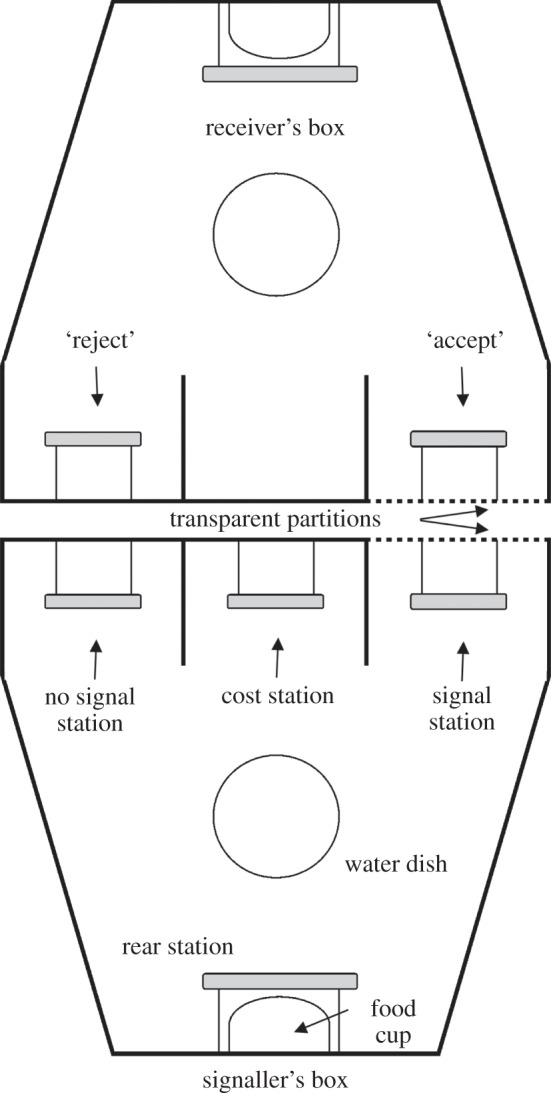Figure 1.

Apparatus. Blue jays occupied side-by-side Skinner boxes with one jay assigned to the role of signaller and another assigned to the role of receiver. Each box was fitted with perch stations, which could record a subject's presence or absence. The signaller and receiver used these perches to play a signalling game in a sequence of trials during the course of the day. At the beginning of each trial, a computer determined the ‘state of environment’ to be true or false (table 1). The state in a given trial was unknown to the receiver but revealed privately to the signaller via a system of cue lights. Signallers provided positional signals to the receiver by choosing either the ‘signal’ or ‘no signal’ perch station. In response, the receiver must choose between one of two stations at the front of its chamber. If the state was true, the receiver could only obtain food by hopping onto the ‘accept’ perch; and if the state was false, the receiver could only obtain food by hopping onto the ‘reject’ perch (table 1A). Table 1B shows how the receiver's action determined the pay-offs received by the signaller. To implement signal costs, the signaller was required to hop back and forth between the cost and rear stations c times (table 1C). The signaller was always free to choose the ‘no signal’ station without cost.
